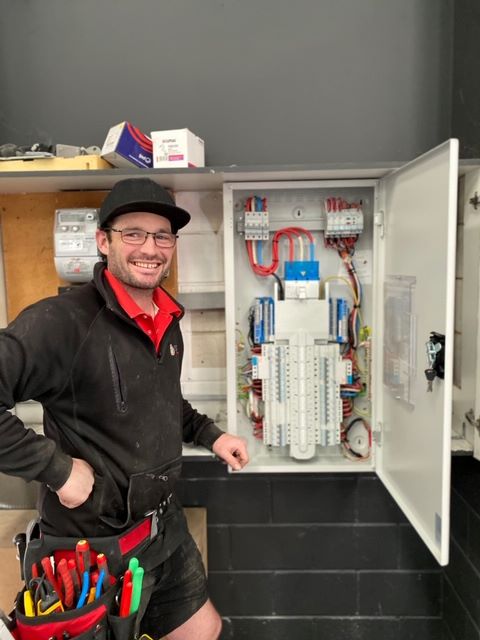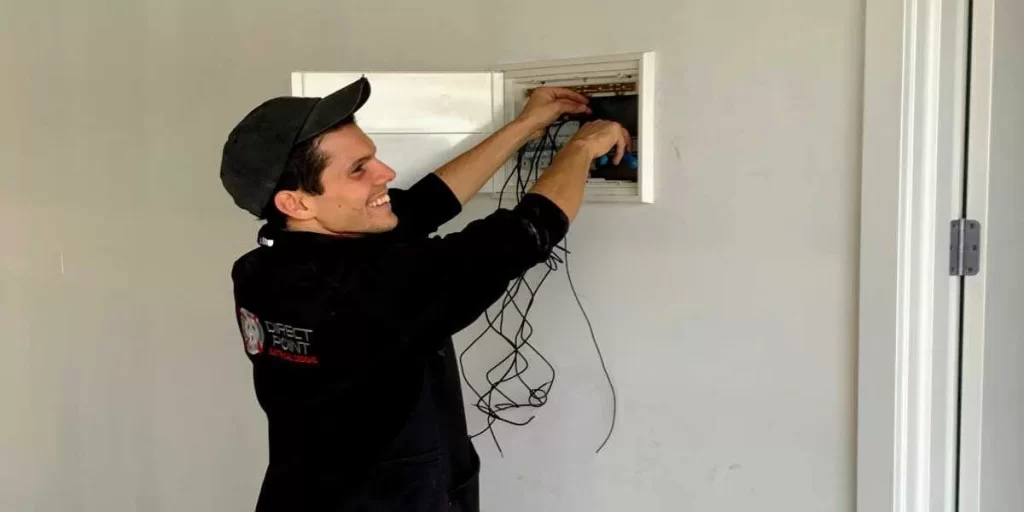When considering electrical installations for your residential or commercial property, many property owners often question the need for a main breaker in a sub panel. This inquiry is particularly relevant as individuals look to upgrade their electrical systems or add circuits to meet increasing power demands. Understanding the roles and regulatory requirements surrounding sub panels is essential in creating a safe, efficient, and reliable electrical system that can accommodate modern energy needs.
Typically, a sub panel does not require a main breaker since it receives power from the main panel, which already contains a primary breaker that governs the total power supply. The main panel’s breaker serves as the main disconnect for the entire electrical system, including all connected sub panels. However, some local electrical codes or specific installation guidelines may necessitate the inclusion of a main breaker in sub panels for enhanced safety or operational convenience. Therefore, it is critical to check local regulations to ensure that your setup is compliant and safe.
Even though a main breaker is not always a standard requirement, incorporating one into your sub panel can offer significant benefits. It provides a straightforward and efficient method for shutting down power to all circuits within that specific panel without affecting the entire electrical system. This feature becomes especially valuable during maintenance or emergency situations, allowing for the safe isolation of various sections of your property’s electrical infrastructure, thus improving safety and accessibility in critical times.

Discover the Essential Functions and Benefits of Sub Panels in Electrical Systems
Sub panels play a crucial role in electrical systems by enabling effective power distribution to designated areas or devices within a property. They enhance circuit management and organization while increasing the overall capacity to manage electrical loads efficiently. By strategically placing sub panels throughout your property, you can optimize your electrical infrastructure to meet the varying demands of different appliances and equipment, ensuring reliable operation and performance.
Understand the Importance of Sub Panels: Key Benefits for Property Owners
A sub panel, often referred to as a subsidiary panel or distribution board, serves as an additional electrical panel that branches off from the main electrical panel. Its primary function is to act as a secondary distribution point for electricity throughout a building, providing flexibility and improved efficiency. Sub panels are typically installed to:
- Increase circuit capacity, accommodating diverse applications and equipment.
- Isolate power supply to specific areas or devices, enhancing safety and convenience.
- Facilitate superior organization and management of the overall electrical system.
Common locations for sub panels include garages, workshops, or larger homes where the main panel may be situated far from particular areas requiring power. By implementing sub panels, property owners can achieve more efficient power distribution, simplifying circuit management and improving accessibility to control their electrical systems.
Key Considerations for Electrical Load Assessments Before Installing a Sub Panel
Before moving forward with the installation of a sub panel, it is vital to conduct a comprehensive assessment of the electrical load requirements. Important factors to consider include:
- The total amperage needed for the specific area or equipment.
- The quantity and types of circuits required for distinct applications.
- The distance between the main panel and the proposed sub panel location.
Calculating the expected load is essential to ensure that the sub panel can safely accommodate it. Sub panels typically come in capacities ranging from 60 to 200 amps, depending on their intended use. Matching the sub panel’s capacity to your exact electrical requirements is crucial for both efficiency and safety. Additionally, considering potential future expansions when sizing your sub panel is a prudent approach, preventing the need for costly upgrades or replacements as your electrical demands evolve.

Critical Elements for Safe and Efficient Sub Panel Installation
To ensure a safe and effective installation of a sub panel, several key considerations must be addressed, including the selection of circuit breakers, adherence to applicable regulatory standards, and the implementation of necessary safety measures. Understanding these installation requirements is critical for establishing a safe and compliant electrical system that minimizes risks.
Assessing the Requirement for Circuit Breakers in Sub Panels
While sub panels do not always need a main breaker, the requirement may change based on specific circumstances, such as:
- The distance from the main panel: If the sub panel is installed far from the main panel, a local disconnect might be necessary.
- The number of circuits: Sub panels with more than six breakers generally require a main breaker to enhance safety.
- Local codes: Certain jurisdictions may require the installation of main breakers in all sub panels.
A main lug sub panel relies on the main breaker from the main panel for overcurrent protection, which is a common setup when the sub panel is located close to the primary electrical panel. It is crucial to be aware of the specific requirements of your installation to ensure compliance and safety.
Comprehending Regulatory Standards for Sub Panel Installations in Australia
In Australia, specific electrical standards dictate the installation of sub panels, which include:
- AS/NZS 3000: This standard specifies the comprehensive requirements for all electrical installations.
- Maximum rating: Main breakers for sub panels must not exceed the ampacity of the feeder conductors to ensure safe operation.
- Labelling: Mandatory clear identification of the power source for the sub panel.
Adhering to these standards is vital for ensuring safety and legal compliance. It is advisable to consult local authorities for specific regional requirements, and remember that all electrical work should be conducted by a licensed electrician to guarantee safety and compliance!

Implementing Essential Safety Measures for Sub Panel Installations
Establishing strong safety measures during sub panel installations is crucial for reducing electrical hazards and ensuring operational safety:
- Proper grounding: Ensure that the sub panel is adequately grounded to reduce the risk of electrical shocks.
- Adequate spacing: Maintain sufficient clearance around the panel to allow for easy access and proper ventilation.
- Weatherproofing: For outdoor installations, use weather-resistant enclosures to protect against moisture and environmental factors.
Moreover, it is essential to select the correct wire sizes and types appropriate for the expected load. Installing arc fault circuit interrupters (AFCIs) and ground fault circuit interrupters (GFCIs) per code requirements is also crucial for safety. Regular inspections and maintenance of the electrical installation greatly enhance ongoing safety and compliance. Always hire a licensed electrician for sub panel installations to ensure that all safety standards are meticulously followed.
Frequently Asked Questions About Sub Panels and Main Breakers Answered
The complexities surrounding sub panels, including breaker requirements, sizing, and regulations, can be daunting for property owners. Gaining a clear understanding of the fundamental requirements is essential for ensuring a safe and compliant electrical setup that adheres to all local codes and safety standards.
Is a Main Breaker Required for a Sub Panel Installation?
A sub panel does not inherently require a main breaker. The necessity primarily depends on its location relative to the main panel and local electrical codes. If the sub panel is situated within the same building as the main panel, a main breaker is typically not required.
However, if the sub panel is located in a separate structure, it is usually necessary to include a main breaker for safety and compliance purposes, ensuring that all electrical installations conform to local regulations.
Can a Main Breaker Panel Serve as a Sub Panel?
Yes, a main breaker panel can function as a sub panel, although this may not always be the most efficient choice. In this scenario, the main breaker would act as an additional disconnect point rather than the primary disconnect for the entire electrical system.
Opting for a panel specifically designed as a sub panel is often a more cost-effective and space-efficient solution, providing better functionality for your electrical needs.
What Size Breaker is Suitable for a 100 Ampere Sub Panel?
For a 100 ampere sub panel, it is standard to use a 100 ampere breaker in the main panel to supply power to it. This breaker should match the sub panel’s rating to ensure optimal protection and functionality, providing a reliable power supply.
Additionally, the wire size must also be appropriate for handling a 100 ampere load, ensuring that the entire electrical system operates safely and efficiently.
What Regulations Govern the Installation of Electrical Sub Panels?
Electrical sub panel regulations can vary by region, but they primarily focus on safety and accessibility. Key regulations typically include:
- Proper grounding and bonding procedures to enhance safety.
- Correct wire sizing to adequately accommodate anticipated loads.
- Adequate spacing around the panel to ensure accessibility and safety.
- Clear labelling of all circuits within the panel for better management.
Always consult local codes and consider professional installation to ensure full compliance with all regulations, thus creating a safe electrical environment.
What is the Capacity Limit for a Sub Panel Connected to a 200 Ampere Main Panel?
A sub panel connected to a 200 ampere main panel does not have a fixed capacity limitation. The size of the sub panel depends on various factors, including:
- The available capacity in the main panel to support additional loads.
- The intended load requirements for the sub panel based on its usage.
- The wire size used between the panels, ensuring it can safely handle the load.
It is feasible to install a 100 or 150 ampere sub panel, provided the main panel has sufficient spare capacity to accommodate it, offering flexibility for future electrical needs.
How Can One Accurately Size a Breaker for a New Sub Panel Installation?
To effectively size a breaker for a new sub panel, follow these essential steps:
- Calculate the total load that the sub panel is expected to support by considering all connected devices.
- Select a panel that is rated for that load or higher to ensure safety and efficiency.
- Choose a breaker in the main panel that corresponds with the sub panel’s rating for optimal performance.
It is advisable to anticipate future expansion needs when sizing the panel. Often, installing a slightly larger panel than currently necessary can provide added flexibility to accommodate future electrical demands, making your system more adaptable.
The Article: Does a Main Breaker Need to Be in a Sub Panel? first appeared on https://writebuff.com
The Article Main Breaker Requirements for Sub Panels Explained Was Found On https://limitsofstrategy.com

